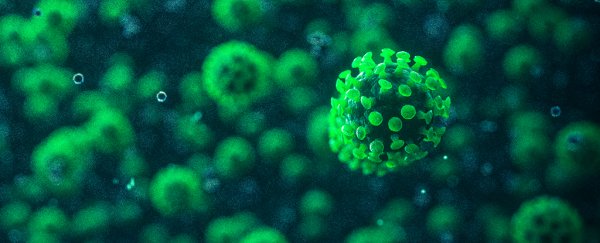For their own self-preservation, infectious bacteria often try their best to stay out of the way of the immune system in our bodies – and scientists have found a surreptitious and previously undiscovered way that they do this.
What happens is that the bacteria release toxins to disarm the mitochondria in immune cells, those tiny organelles that act as the engine rooms of cells. Once the immune cells sense that their mitochondria are inactive, they trigger apoptosis or programmed cell death.
The findings could give us new ways of tackling infectious bacteria, particularly those that have grown resistant to antibiotics – although up to this point, experiments have only been carried out on mice in the laboratory.
"Ironically, it is the activation of host cell death factors that deliver the final blow to mitochondria which induces apoptosis, not the bacterial toxins themselves," says molecular biologist Pankaj Deo from the Monash Biomedicine Discovery Institute (MBDI) in Australia.
In other words, the bacteria toxins aren't directly killing immune cells, but rather setting in motion a chain of events that causes our body's emergency responders to kill themselves. Our immune cells are using mitochondria as infection sensors.
That was the case in tests on mice described in this study: by targeting genetic controls for apoptosis in the rodents, the scientists were able to reduce inflammation in the animals and lower the risk of infection.
The bacterial pathogens Neisseria gonorrhoeae, uropathogenic Escherichia coli, and Pseudomonas aeruginosa were the ones tested – all of which are commonly found in hospitals and can develop resistance to drugs – but the team says the findings would also apply to other species of bacteria.
"We've shown in this paper that we can accelerate the immune response," says molecular biologist Thomas Naderer from MBDI.
"The other side is that if that response persists and we get constant inflammation – which is usually associated with bacterial infection and which causes a lot of tissue damage – we have a new way to shut down that tissue-damaging inflammation."
Previously, attention had been focussed on bacterial toxins that created a different type of automatic cell death, called pyroptosis. Here, the researchers have spotted other mitochondria-targeting toxins wrapped up in structures called outer membrane vesicles.
Now that we know more about how the mitochondria are being targeted, scientists might be able to stop it. Further trials will be needed on humans to work out exactly what's going on at the microorganism level, but it's possible that existing drugs could be reengineered and new drugs could be developed to fight off infection.
With pathogens becoming smarter and smarter when it comes to dodging the drugs we send in to beat them – as well as evading the body's own defences – any new innovations in treatment could make a significant difference.
"There's been a lot of effort trying to block endotoxins that kill immune cells, but this study really shifts the focus onto different toxins that might be more important," says Naderer. "It gives us a few good leads that we can look at as a next step."
The research has been published in Nature Microbiology.
